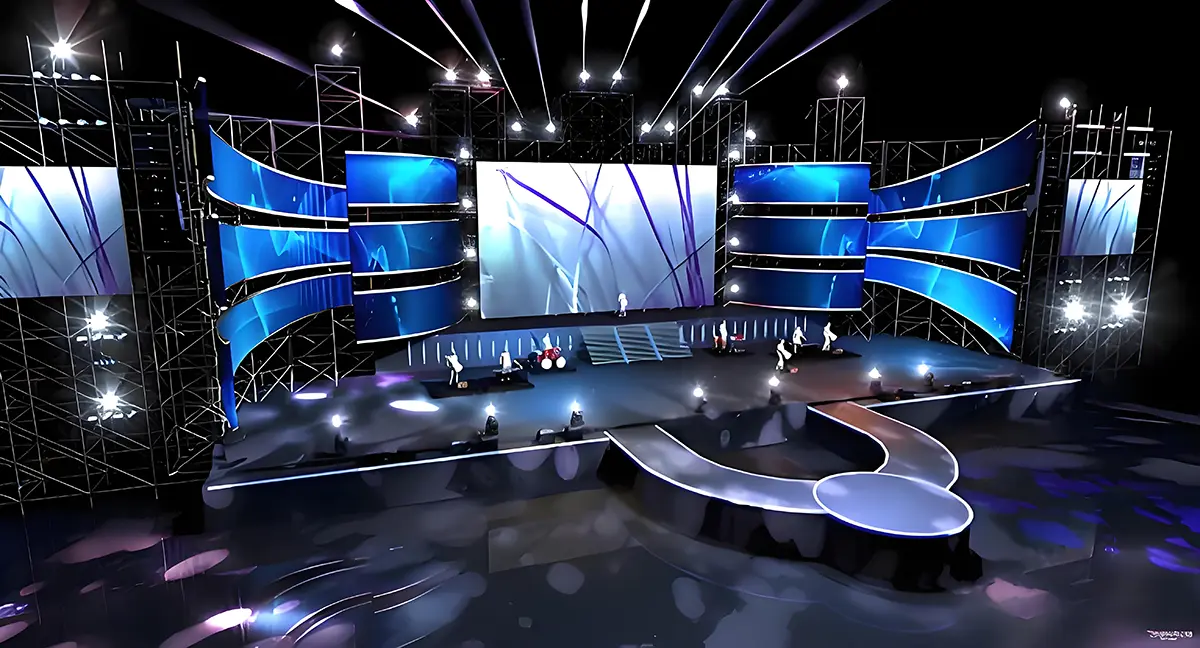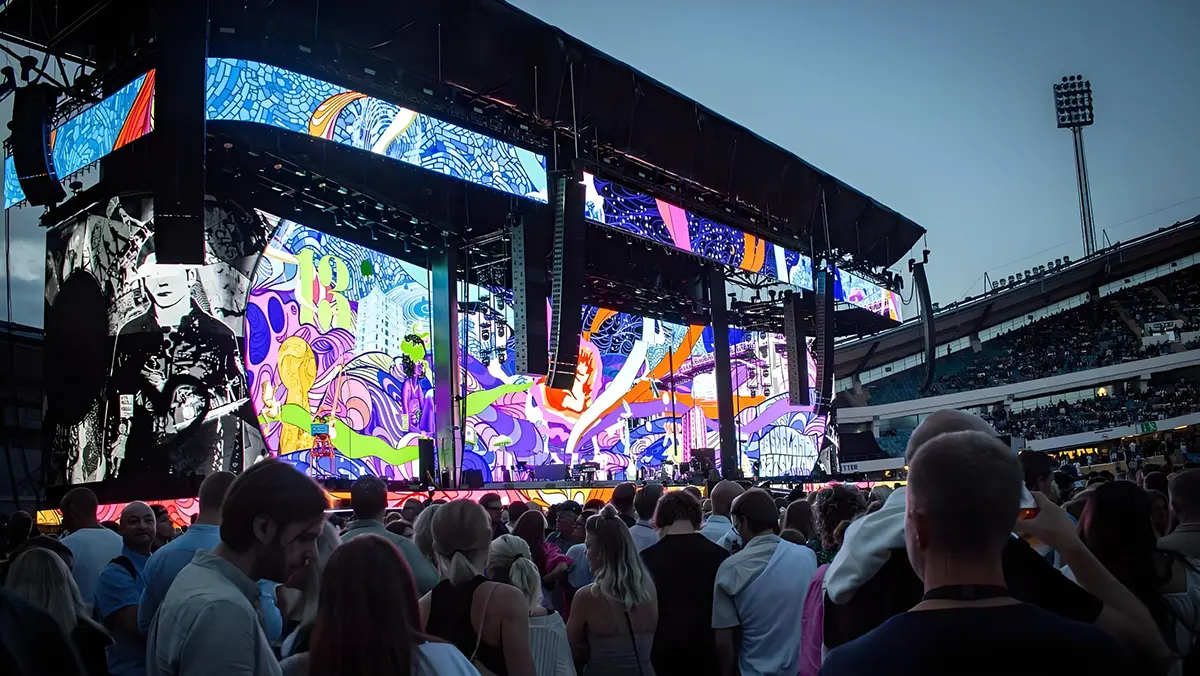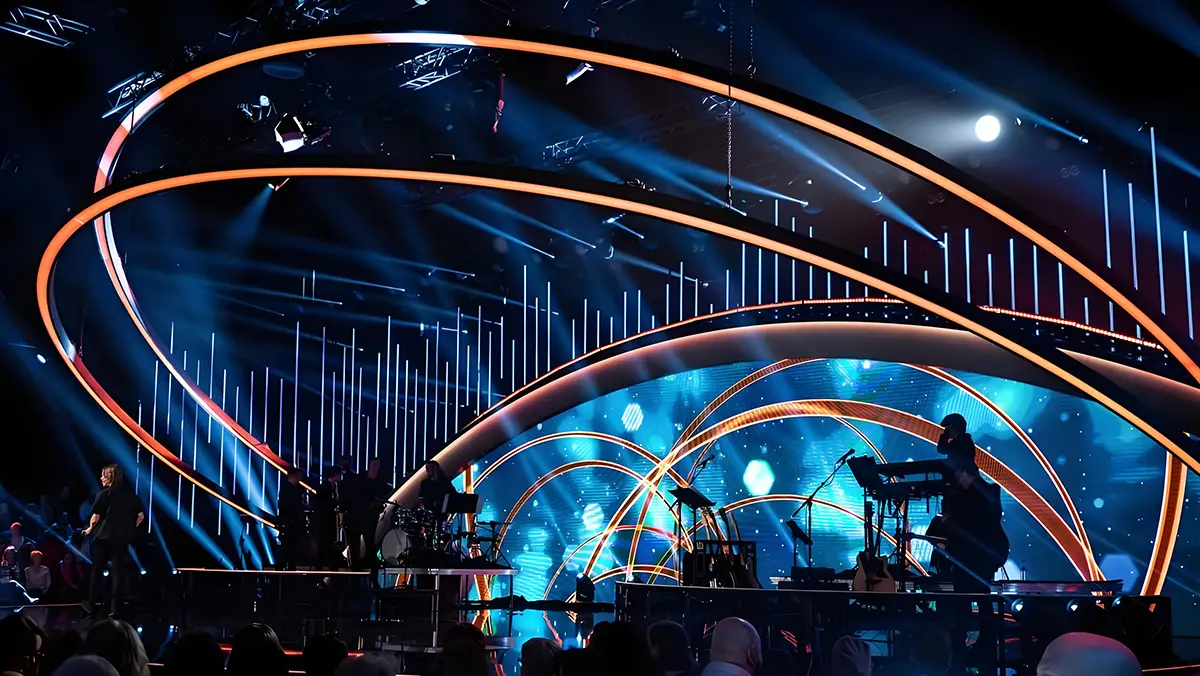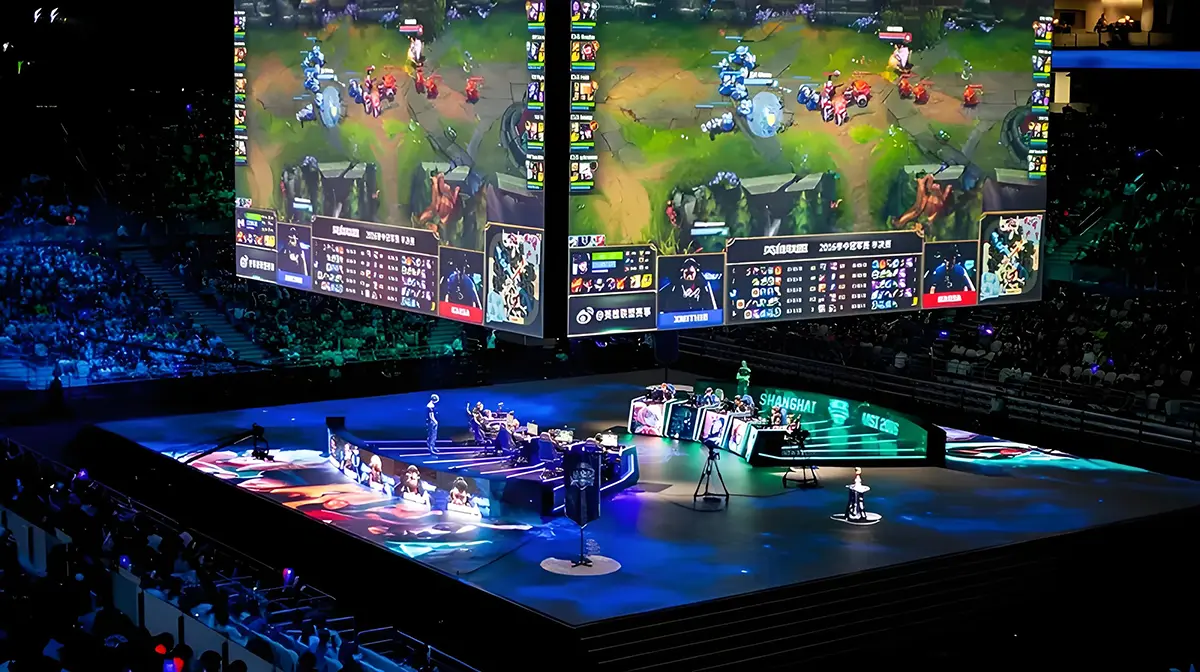Ebisenge bya LED bikyusizza engeri bizinensi, ebibiina, n’ebifo eby’amasanyu gye biragamu ebintu ebya digito. Nga obwetaavu bw’ebifaananyi ebinnyika, eby’obulungi obw’amaanyi bweyongera okukula, ebisenge bya LED bifuuka byetaagisa mu mirimu egy’enjawulo. Mu kitabo kino, tujja kwetegereza buli kimu ky’olina okumanya ku bisenge bya LED, omuli ennyonyola yaabyo, ebitundu, emisingi gy’emirimu, emigaso, n’okukozesebwa okwa bulijjo.

Bbugwe wa LED nkola nnene ey’okulaga erimu ebipande bya LED (Light Emitting Diode) ebitali bimu nga biyungiddwa bulungi okukola ssirini ey’obumu, ey’obulungi obw’amaanyi. Enkola zino zisobola okutuusa ebifaananyi ebitangaavu, ebinyirira, era ebikyukakyuka mu mbeera zombi ez’omunda n’ebweru. Okwawukanako n’enkola ez’ennono ez’okulaga, ebisenge bya LED biwa scalability, flexibility, n’okutegeera okw’enjawulo.
Ebisenge bya LED bikola nga bikozesa enkumi n’enkumi za LED entonotono ezifulumya ekitangaala nga zikozesebwa amasannyalaze. LED zino zisengekeddwa mu bikunta oba pixels, nga buli emu erimu diodes emmyufu, kiragala ne bbulu. Bwe zigatta, zikola eky’okwolesebwa ekya langi enzijuvu. Paneli zino ziyungibwa ku video processor, ekyusa signals eziyingira mu dynamic visual content.
Ebitundu Ebikulu:
Module za LED:Ebizimbe ebikulu, ebirimu ppikisi za LED nnyingi.
Kabineti:Fuleemu ezirimu modulo za LED era nga ziwa obuyambi mu nsengeka.
Ekyuma ekikola vidiyo:Ekyusa obubonero bwa vidiyo okulaga.
Amasannyalaze:Okukakasa engabanya y’amasannyalaze enywevu.
Enkola y’okufuga:Esobozesa abaddukanya emirimu okuddukanya ebirimu n’enkola.
Ebisenge bya LED eby’omundazikoleddwa mu mbeera ezifugibwa nga ebisenge by’enkiiko, amaduuka g’amaduuka, n’ebifo eby’okwolesezaamu. Zitera okuba n’amaloboozi ga ppikisi amalungi okusobola okukuba ebifaananyi eby’obulungi obw’amaanyi.

Ebisenge bya LED eby’ebweruzikoleddwa yinginiya okugumira embeera y’obudde enzibu. Ziwa emitendera egy’okumasamasa okw’amaanyi okusigala nga zirabika wansi w’omusana obutereevu.

Ebisenge bino bisobola okufukamira n’okukoona, ne kisobozesa okuteeka ebintu mu ngeri ey’obuyiiya mu bifo eby’enjawulo eby’ebizimbe.
Ebisenge bino birungi nnyo mu maaso g’amaduuka n’endabirwamu, bikuuma okulabika ate nga biraga ebintu ebirabika obulungi.
Ebisenge bya LED biwa ekitangaala eky’oku ntikko bw’ogeraageranya n’eby’okwolesebwa eby’ennono, okukakasa nti birabika mu mbeera z’amataala ez’enjawulo.
Zisobozesa okugaziwa awatali kusosola, ne kiba kyangu okukola eby’okwolesebwa ebinene.
Tekinologiya wa LED ow’omulembe anywa amaanyi matono ate ng’awa ebifaananyi ebimasamasa.
Ebisenge bya LED bikwatagana n’embeera nnyingi, okuva ku kulanga n’okusanyusa okutuuka ku bifo ebiduumira n’ebifo eby’amaduuka.
Singa biddaabiriza bulungi, ebisenge bya LED bisobola okumala essaawa ezisukka mu 100,000 nga bikola obutasalako.
Dizayini ya modulo esobozesa okukyusa ebitundu ebyonooneddwa mu ngeri ennyangu.
Ebisenge bya LED bikozesebwa okusikiriza bakasitoma n’ebirango ebikyukakyuka n’ebintu ebitumbula.
Bizinensi ziteeka ebisenge bya LED okusobola okulaga, enkiiko, n’okukubaganya ebirowoozo ku vidiyo.
Ebisenge bya vidiyo ebya LED byetaagisa nnyo mu kulondoola mu kiseera ekituufu, okulaba data, n’okutegeera embeera.
Ebifo bino bikozesa bbugwe wa LED okuweereza emikolo butereevu, okukuba ebipande, n’okulanga.
Ebisaawe by’ennyonyi, siteegi z’eggaali y’omukka, n’ebifo bbaasi we basimba bikozesa bbugwe wa LED okukola enteekateeka, endagiriro, n’obubaka obw’amangu.
Aboolesi bakozesa ebisenge bya LED okulaga ebintu n’okusikiriza abagenyi.

Eddoboozi lya pikseli lye lisalawo okusalawo n’obuwanvu bw’okulaba obusinga obulungi. Eddoboozi lya pikseli eritono livaamu okusalawo okw’amaanyi n’okulaba okumpi.
Londa sayizi ya ssirini ekwatagana n’ebipimo by’ekifo kyo n’obuwanvu bw’okulaba.
Kakasa nti bbugwe wa LED akuwa ekitangaala ekimala eri embeera y’okussaako.
Emiwendo gy’okuzza obuggya egy’amaanyi giziyiza okuwuuma n’okulongoosa okutegeera kw’entambula.
Londa dizayini esobozesa okugiteeka mu ngeri ennyangu n’okuddaabiriza okutono.
Lowooza ku ssente zonna ezisaasaanyizibwa ku bwannannyini, omuli okugiteeka, okugiddukanya, n’okuddaabiriza.
| Ekintu eky'enjawulo | Bbugwe wa LED | LCD Video Wall |
|---|---|---|
| Okumasamasa | Waggulu Nnyo | Kyomumakati |
| Obutaba na buzibu | Completely Seamless | Bezels ezirabika |
| Obulamu bw’abantu | Okuwanvuwa | Ebimpimpi |
| Enkoona y’okulaba | Obugazi | Limited |
| Enkozesa y’Amaanyi | Okukola bulungi | Waggulu |
| Okussaawo | Modular era nga Ekyukakyuka | Ebipande Ebinywevu |
| Omuwendo | Ensimbi ezisookerwako ez’oku ntikko | Okukendeeza ku nsimbi ezisookerwako |
Weekenneenye ekifo okuzuula ekifo ekiriwo, enkoona z’okulaba, n’embeera y’obutonde.
Kola n’abakugu okukola dizayini y’ensengeka y’okwolesebwa, eddoboozi lya pikseli, n’ebipimo.
Teeka kabineti era oyunge modulo za LED obulungi.
Gatta enkola ya vidiyo n’enkola y’okufuga, olwo okalibe eky’okwolesebwa.
Okukola okugezesa okujjuvu okukakasa nti kikola bulungi.
Tekinologiya ono akuwa enjawulo ey’oku ntikko, okumasamasa, n’okukola obulungi.
8K n’okusingawo zigenda zituukirirwa ku by’okwolesebwa ebirina ebikwata ku bintu ebitali bimu.
Obugezi obukozesebwa busobozesa okulongoosa ebirimu mu ngeri ey’omulembe n’okulabirira okulagula.
Ebikozesebwa ebiwangaala n’okukozesa amasannyalaze amatono bye bikulu ebissibwako essira.

Ebisenge bya LED biddamu okunnyonnyola engeri gye tufunamu ebirabika mu makolero ag’enjawulo. Enkola zazo ez’enjawulo, okumasamasa okw’amaanyi, n’okulinnyisa omutindo bizifuula okulonda okulungi eri bizinensi ezinoonya eby’okwolesebwa ebya digito ebikwata ku bantu. Bw’otegeera ebika byabwe, emigaso gyazo, n’engeri gye zikozesebwamu, osobola okulonda eky’okugonjoola ekizibu kya LED ekituukiridde ku bbugwe okusinziira ku byetaago byo.
Bw’oba weetegese okunoonyereza ku bisoboka mu tekinologiya wa LED wa bbugwe, tuukirira abakugu baffe okufuna ebiteeso ebikukwatako n’okwebuuza ku pulojekiti.
Ebiteeso Ebibuguma
Ebintu Ebibuguma
Funa Quote ya bwereere mu bwangu!
Yogerako ne Ttiimu Yaffe ey'okutunda Kati.
Bw’oba oyagala ebintu byaffe, tukusaba otuukirire mu bwangu
Tuuka ku ttiimu yaffe ey’abatunzi okunoonyereza ku nkola ezikoleddwa ku mutindo ogutuukana obulungi n’ebyetaago bya bizinensi yo n’okukola ku bibuuzo byonna by’oyinza okuba nabyo.
Endagiriro ya Email:info@reissopto.com ku mukutu gwa yintaneetiEndagiriro y’ekkolero:Ekizimbe 6, Huike Flat Panel Display Industrial Park, No. 1, Gongye 2nd Road, Ekitundu kya Shiyan Shilong, Disitulikiti y'e Bao'an, ekibuga Shenzhen , China
whatsapp:+8615217757270